Something is amazing about entering into a bedroom that feels like you—a space where every corner speaks comfort and every detail sparks joy.
I vividly recall the first time I remodeled my own bedroom after years of neglecting it. The alteration wasn’t simply cosmetic; it impacted how I felt every morning and night.
Decorating a bedroom isn’t about following tight standards or pricey makeovers. It’s about building a getaway that expresses your personality while satisfying your daily necessities.
Whether you’re beginning from scratch or renewing a worn space, these practical methods can help you build a bedroom you’ll actually appreciate spending time in.
1. Define Your Bedroom’s Style and Purpose
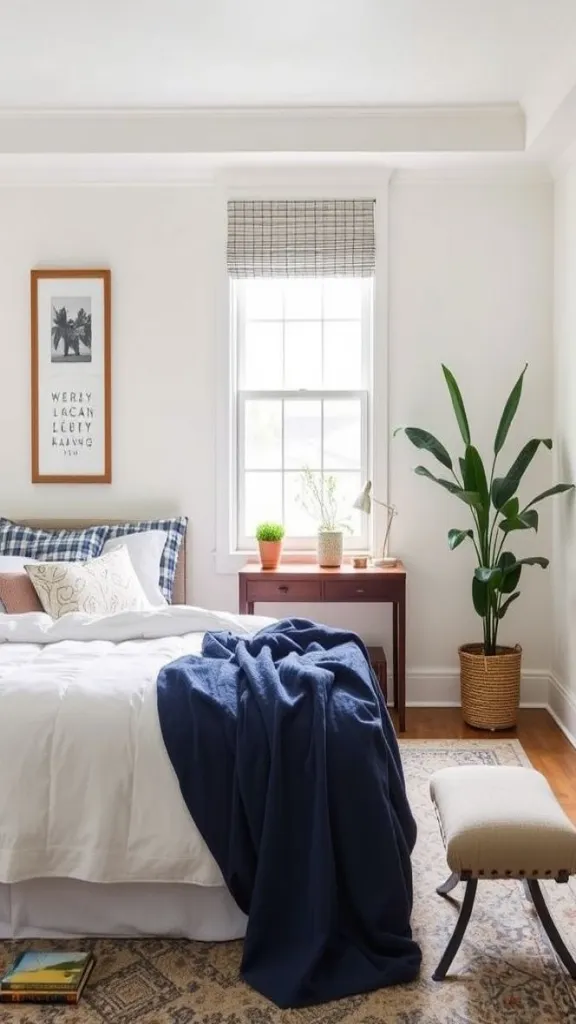
Before plunging into design selections, understand what you want your bedroom to be. Is it solely a slumber refuge, or does it function as a reading nook, home office, or yoga space? Your answer impacts every choice ahead.
Think about the mood you crave—calming and minimal, colorful and energetic, or warm and romantic. Consider your lifestyle too: Do you need blackout conditions for shift work, or do you appreciate awakening to morning sunlight?
Write down three phrases that capture your dream bedroom ambiance, such as “serene,” “luxurious,” or “playful.” This clarity protects you from buying mismatched products that look fantastic in stores but don’t function together.
When you know your style direction and functional needs upfront, decorating becomes deliberate rather than haphazard guesswork.
2. Map Out Your Space Thoughtfully
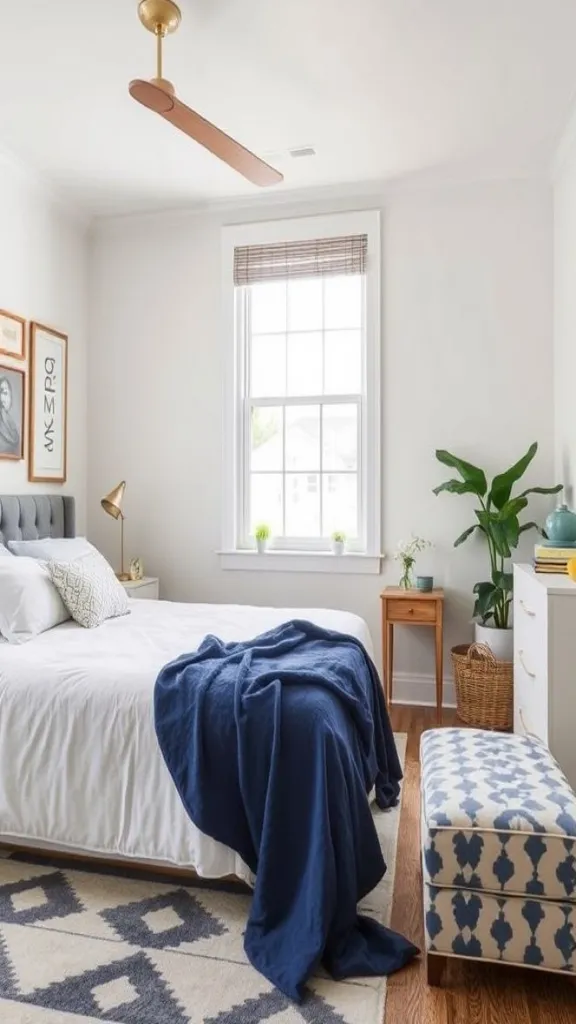
Understanding your bedroom’s layout influences all that follows. Measure your room dimensions carefully, including window placements, door swings, electrical outlets, and any architectural peculiarities like slanted ceilings or alcoves.
Sketch a simple floor layout on paper or use free room planning software. Consider traffic flow—can you stroll around easily without bumping into furniture? Think about which walls receive natural light and at what times.
This information guides furniture layout and helps you avoid purchasing pieces that overwhelm your area. A well-planned arrangement maximizes functionality while maintaining visual breathing room.
Remember, unoccupied floor space isn’t wasted space; it generates a sense of openness that makes any bedroom appear more elegant and less cluttered.
3. Choose Furniture That Works Hard
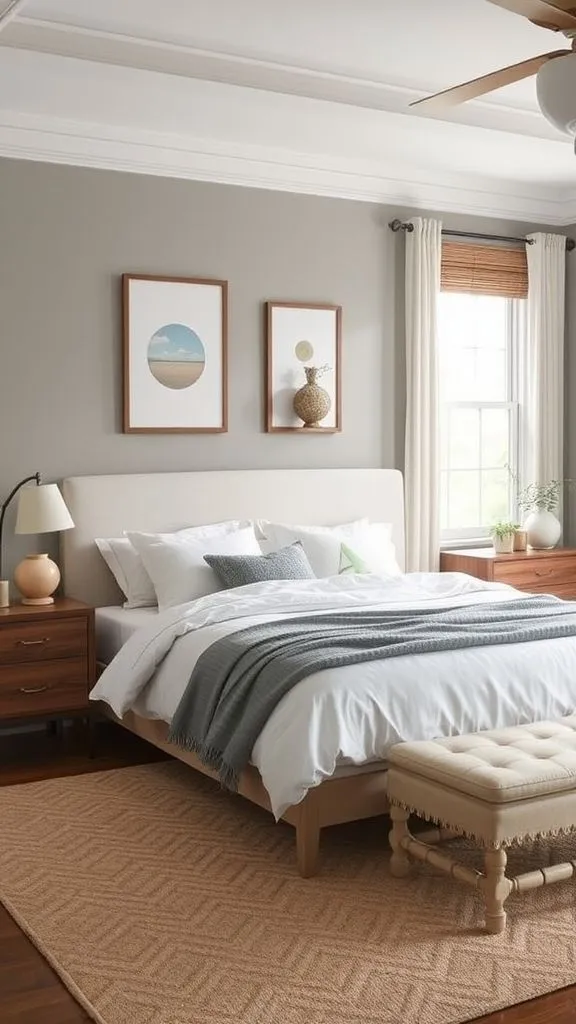
Your bed undoubtedly takes center stage, but bedroom furniture should extend beyond sleeping needs. Select pieces that mix elegance with practical storage and functionality. A solid dresser handles garment storage while its surface shows personal belongings.
Nightstands keep things within arm’s reach and anchor the bed visually. If space allows, consider placing a comfortable reading chair or small bench at the foot of your bed. Scale matters tremendously—oversized furniture suffocates small rooms, while tiny items look lost in big places.
Invest in quality fundamentals that will endure years rather than trendy goods that rapidly age. Multi-functional furniture, like storage ottomans or mattresses with built-in drawers, enhances functionality without losing elegance.
Beyond the bed: Think of including a vanity for morning procedures, floating shelves for books and plants, or a sleek console table that doubles as a workspace if you occasionally work from your bedroom.
4. Create a Stunning Focal Point

Every memorable bedroom needs something that quickly catches the attention and anchors the décor. Most typically, this is the bed wall—consider an upholstered headboard, stunning wallpaper, or a gallery wall of artwork.
Alternatively, a stunning antique dresser, dramatic window treatments, or even an architectural element like exposed brick might act as your room’s centerpiece. Once you’ve chosen your focus point, develop other aspects to complement rather than compete with it.
This structure prevents visual disorder and generates intentional flow. Don’t feel pressured to make everything “match” exactly. The idea is harmonious layering, where your primary element shines while surrounding items enhance the overall vibe you’re generating.
5. Maximize Storage Without Sacrificing Style
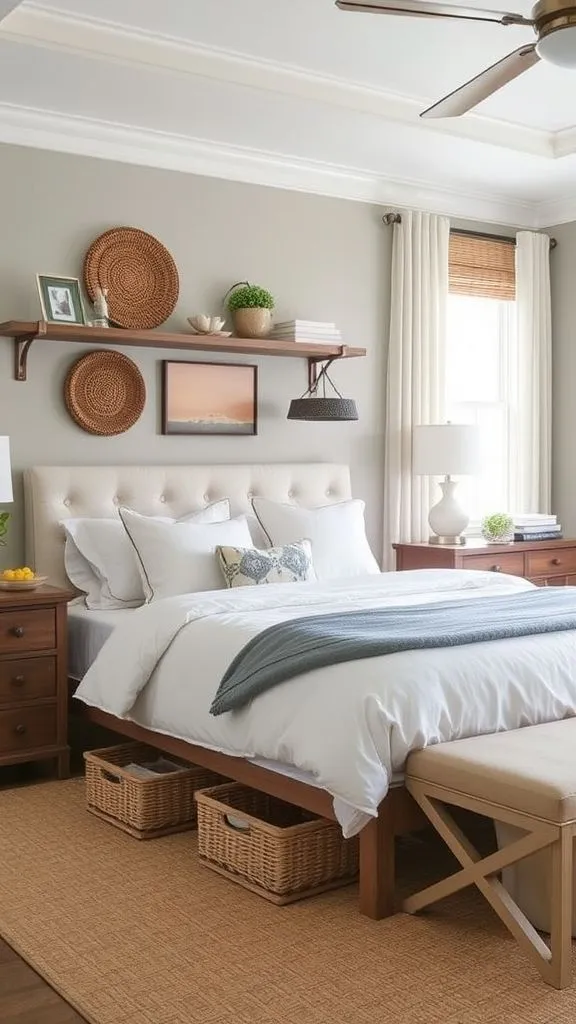
Clutter damages even the most attractively arranged bedrooms; therefore, versatile storage solutions are non-negotiable. Look beyond obvious choices like dressers and closets. Under-bed storage containers hide seasonal items or extra bedding.
Wall-mounted shelves maximize vertical space without devouring floor area. Decorative baskets corral smaller items while providing texture. Consider furniture with concealed storage compartments—beds with lift-up bases, nightstands with drawers, or benches with inside storage.
The finest bedroom storage doesn’t declare itself loudly but quietly keeps stuff tidy and accessible. When everything has a dedicated location, maintaining that fresh, magazine-worthy look becomes effortless rather than exhausting. Trust me, you’ll sleep easier knowing everything’s in its place.
6. Master the 60-30-10 Color Formula
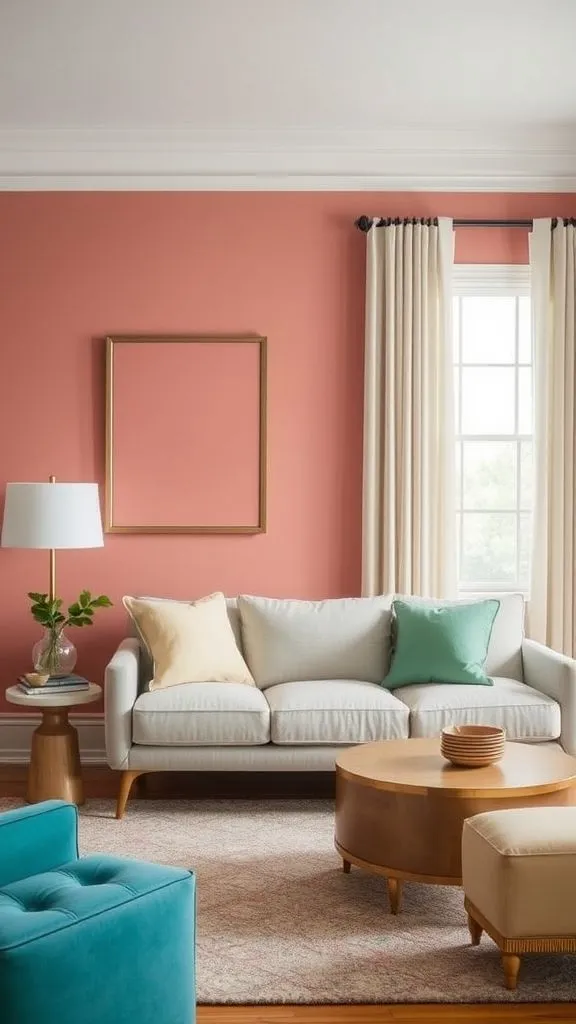
This traditional interior design approach creates balanced, professional-looking color combinations effortlessly. Allocate 60% of your room to a dominating color—typically walls, major furniture, or bedding. Use 30% for your secondary color in curtains, rugs, or accent chairs.
The remaining 10% is your pop color appearing in pillows, artwork, or decorating items. This recipe eliminates color overwhelm while guaranteeing enough variety to keep things interesting. Neutrals perform nicely as your dominant shade, enabling brighter secondary and accent colors to flourish.
Don’t overthink it—even slight variations within the same color family follow this idea efficiently. The beauty of this guideline is its flexibility; you can adjust these percentages significantly while keeping visual harmony that feels planned and finished.
7. Layer Different Textures for Depth
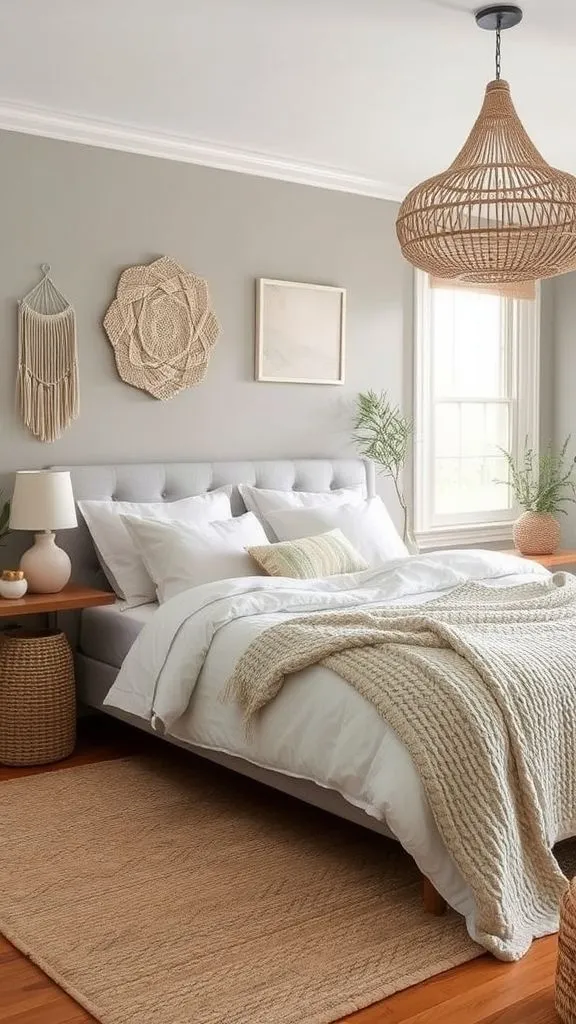
Texture transforms flat, boring bedrooms into rich, welcoming settings worth shooting. Mix sleek surfaces like glass or metal with rougher elements like woven baskets or bulky knit throws. Combine velvety velvet pillows with clean linen linens.
Add a luxurious area rug over hardwood floors. Texture offers visual interest even with monochrome color schemes. Consider materials thoughtfully—natural woods, ceramics, plants, and varied fabrics all provide unique textural aspects.
Layering textures makes your bedroom feel accumulated over time rather than purchased in one shopping excursion. This approach provides refinement and warmth without requiring bright colors or patterns.
Even minor textural changes like a macramé wall hanging or rattan lampshade can greatly boost your room’s overall appearance and comfort level.
8. Design Lighting for Every Mood
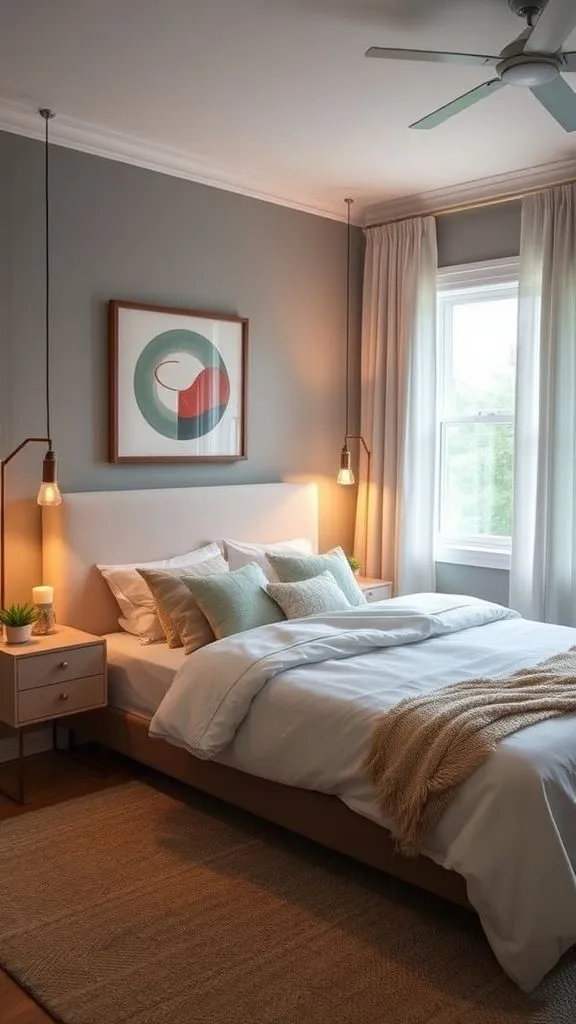
Harsh overhead lighting damages bedroom mood faster than anything else. Create a layered lighting scheme with ambient, task, and accent choices. Install dimmer switches on the above lighting for adjustable brightness.
Place bedside lamps at proper heights for reading—bottom of the shade should align roughly with your shoulder while sitting up. Add string lights, candles, or LED strips for subtle, evocative lighting during evening wind-down.
Consider the color temperature of your bulbs; warm white (2700K-3000K) provides cozier sensations than cold white. Natural light counts too—use drapes or shutters that allow flexibility between privacy and daylight.
Good lighting isn’t expensive, yet it’s revolutionary. The correct illumination helps your bedroom feel like a spa getaway rather than simply another room.
9. Keep Surfaces Clear and Intentional
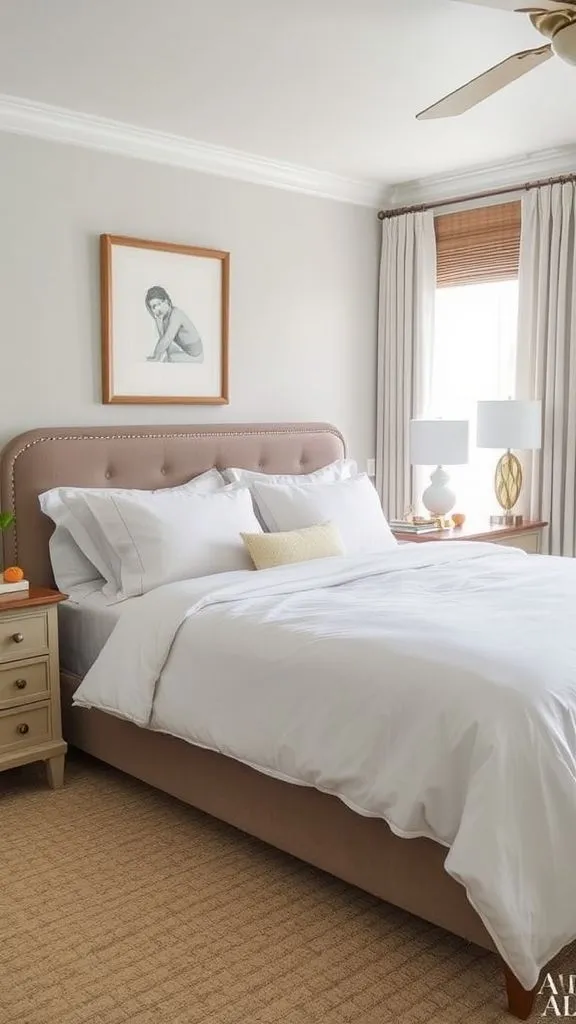
An organized bedroom promotes better sleep and mental clarity than you may imagine. Designate particular spaces for everyday items—jewelry, books, electronics—so they don’t become surface clutter. Implement the “one in, one out” rule to prevent buildup. Make your bed daily; it’s a five-minute chore that quickly makes the entire room look pulled together.
Use drawer dividers for smaller items like accessories or undergarments. Regularly remove items you no longer wear or use. Beautiful organization solutions like matching hangers, labeled boxes, or drawer organizers make maintenance easier and more fun.
When an organization becomes regular rather than overwhelming, your decorated bedroom maintains its fresh, designed appearance long after the first setup.
Intuitive storage tips: Group comparable goods together, store frequently used objects at eye level, use clear containers so you can see contents clearly, and establish a donation box for items you’re ready to release.
10. Warm Up Hard Flooring Surfaces
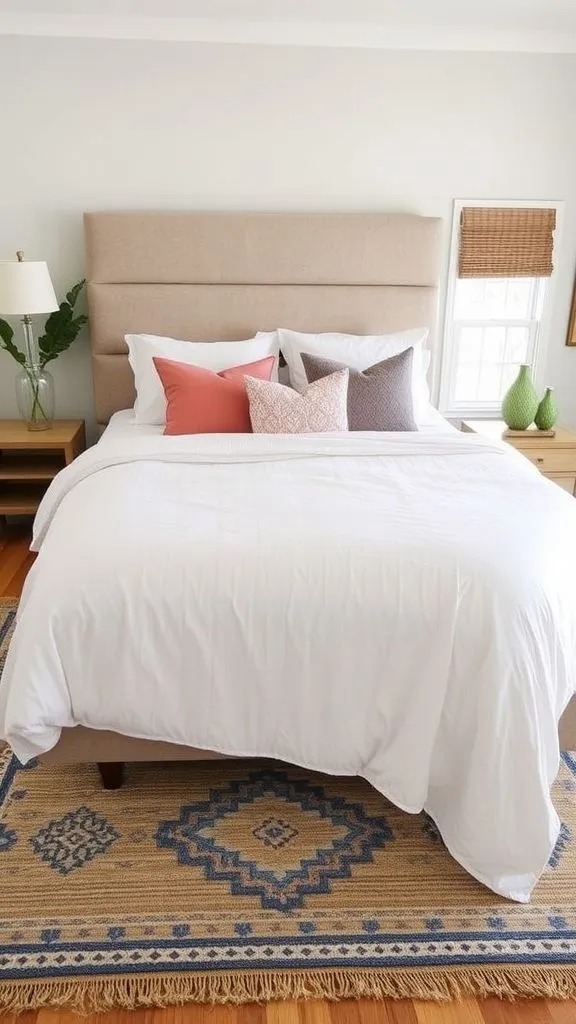
If you have hardwood, tile, or laminate floors, area rugs give important warmth and softness underfoot. Choose rug sizes carefully—too small appears unconnected, while the right sizing anchors furniture groups.
For bedrooms, position rugs so they stretch beyond the bed sides and foot, creating a landing zone when you step out. Consider a rug pad underneath to prevent slippage and add padding. Rugs introduce color, pattern, and texture while also dampening sound.
Natural fiber carpets like jute add organic texture, while plush alternatives feel sumptuous on bare feet. Don’t shy away from patterns if your walls and furniture are neutral. A gorgeous rug can function as artwork for your floor, adding individuality and completing your bedroom’s color story simply.
11. Your Bedroom Transformation Starts Now
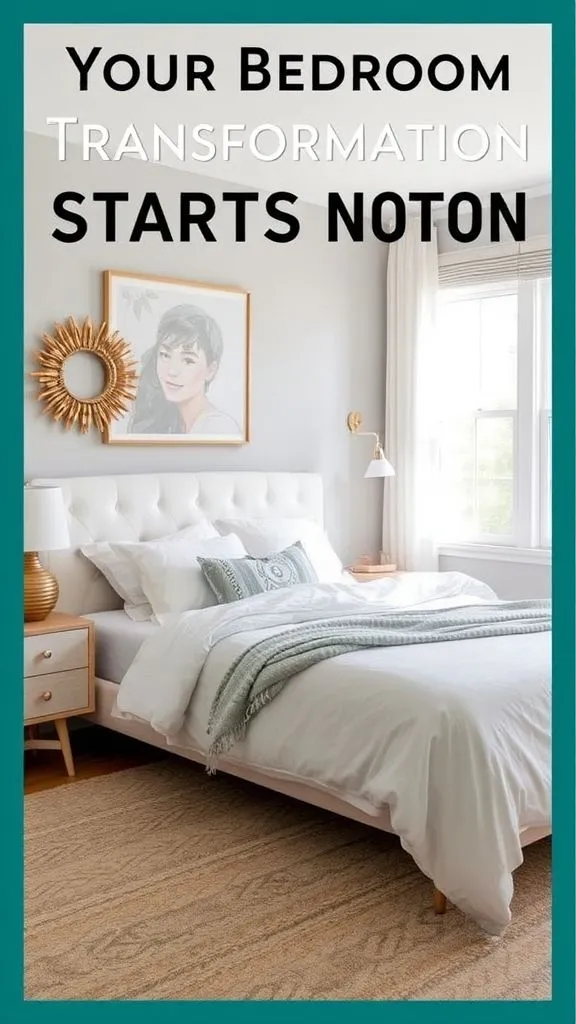
You’ve got the knowledge—now comes the fun part of bringing your vision to life! Start with one area or element rather than attempting everything simultaneously. Maybe paint an accent wall this weekend or rearrange furniture to improve flow.
Small, incremental changes build momentum and prevent overwhelm. Remember that decorating is personal; what works in magazines might not work for your lifestyle, and that’s perfectly fine. Your bedroom should support how you actually live, not some idealized version of perfection.
Permit yourself to experiment, make mistakes, and adjust as you go. The bedroom you’ve been dreaming about is absolutely within reach—it just takes intention, patience, and a willingness to create a space that truly feels like home.
No products found.
Frequently Asked Questions
What’s the optimal budget for decorating a bedroom?
Budget fluctuates drastically depending on starting position and goals. You may freshen a home for under $500 with paint, new bedding, and accessories, or pay several thousand for furniture enhancements. Prioritize quality basics first, then add decorative layers over time as funding allows.
Should bedroom walls be light or dark colors?
Both perform nicely depending on your desired atmosphere and room size. Light colors make tiny areas feel larger and brighter, while dark shades create comfortable, personal atmospheres. Test paint swatches in your actual lighting before committing to any hue.
How can I decorate without destroying rental walls?
Use removable wallpaper, command strips for artwork, tension rods for curtains, and freestanding furniture instead of built-ins. Lean huge mirrors or art against walls rather than hanging. These temporary solutions make an impact without losing your security deposit.
What size rug works best under a queen bed?
An 8×10 rug often works well, extending approximately 18-24 inches beyond each side and the foot of a queen bed. This produces a balanced look and guarantees you step upon the rug rather than the cold floor. Measure your specific space to confirm.
How many pillows should be on a bed?
There’s no magic number—use what’s comfortable and visually pleasing to you. Many designers advocate two sleeping pillows per person, plus 2-4 decorative pillows for a stylish look. Just make sure they’re easy to remove at bedtime so they don’t disturb you!
Last update on 2 days ago (2025): Affiliate links and Images from Amazon Product Advertising API